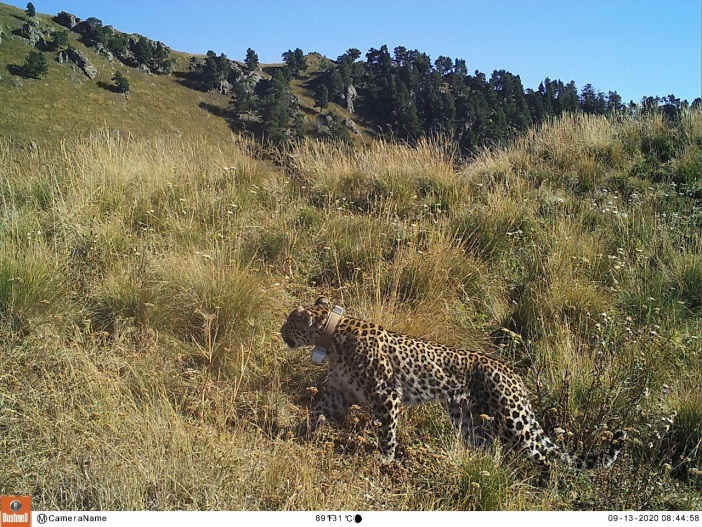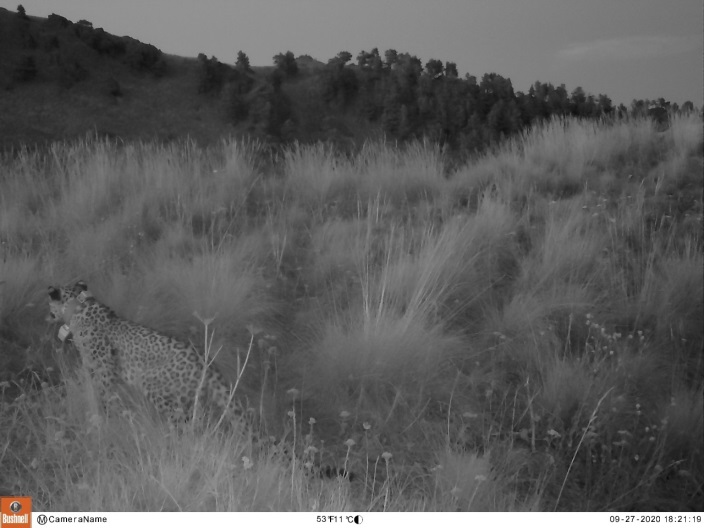
Over the past month, the released animals have expanded their territories and increased the area they inhabited. Until October 26, in the Caucasian reserve, we received regular transmissions about the location of the female Laba, who moved actively but has only wandered a total of 217 km from the moment of release, while not moving away from the release point by more than 6.5 km. During the period from 8.10 to 26.10, she traveled about 79 km, constantly adhering to the places with the highest density of ungulates. Since her release, her diet has included chamois, Tura, and red deer. Nevertheless, on October 26, Laba's collar sent a message about the death of the animal, a field team was sent to the site in the Caucasian Reserve, which, during the verification of coordinates received from the collar, found the corpse of the deceased female. The body was transported to Sochi for autopsy by veterinarians. After the autopsy, the samples and tissue analyses were sent for examination, and the collar, which accumulated information about the female's activity over the past period, was sent to Moscow to decipher the collected data. A full analysis of the available data can shed light on the probable causes of the leopard's death. Of all the released animals, Laba has explored the smallest area - 38.7 sq km. Since her release, 9 clusters of locations (potential hunting sites for the female) have been registered for Laba, and the examined points have confirmed that she successfully hunted large ungulates. Released together with Laba, the male Kodor, apparently, also explores the territory of the Caucasian reserve. There is no exact information about how he adapts to life in the wild, since the collar attached to him stopped transmitting information immediately after release. However, data from camera traps confirm that the leopard was alive and well at the time of September 30, and the radio signal from its collar is periodically tracked by specialists and, judging by the fact that it is moving, the leopard is safe and moving freely. Once again, the location of Kodor was ch confirmed by specialists on 15.10.2020 via VHF telemetry in the valley of the Laba river in the upper part of its course. Laba and Kodor never met after their release, but both were photographed on the same camera trap two weeks apart.

Agura who was released in North Ossetia, has kept to a vast forest area for most of the past month, near the place of her release, and at the moment she has returned to the Turmon reserve. Agura has traveled 343 km since her release, including 25 km in the past month. She is very careful and does not stray too far from the place of release – the maximum distance that she moved away from it over the past month is 20 km. She has mastered the most extensive area of all released leopards – a section in the valley green zone, which currently covers an area of 354 square kilometers. Since then, 9 clusters have been registered for her – places where she hunted. Among her prey are jackals, raccoon dogs, badgers, and wild forest cats. Released together with Agura, the male Baksan has covered 342 km since his release, of which 38 km was
covered from October 8 to October 21. The area that Baksan mastered after release was 747 square kilometers. At the same time, he withdrew from the place of release by 38 km. Since then, nine clusters have been registered for the Baksan (places where the leopard hunted prey). His prey included raccoon dogs, jackals, badgers, foxes, and roe deer. On October 21, the transmitter on Baksan's collar stopped sending signals about his location. There is no information about his location at the moment. Field teams are searching for signals from his VHF beacon, and the leopard has not been found so far. For the entire period that has passed since the release, there have never been any meetings of released leopards with each other.
The Program to restore the Persian leopard in the Caucasus is implemented by the Ministry of natural resources with participation of the Sochi national Park, Caucasus nature reserve, North-Ossetian nature Reserve, National Park "Alania", World Fund for Nature, A. N. Severtsov Institute of ecology and evolution the Russian Academy of Sciences (IEE RAS), A. K. Tembotov Institute of ecology of mountain territories RAS, Moscow Zoo, in cooperation with the International Union for conservation of nature (IUCN) and the European Association of zoos and aquariums (EAZA). VTB Bank provides financial support for monitoring the Central Asian leopard in the Caucasus. In North Ossetia, RusHydro provides financial support for the population recovery program.
Материалы по теме:
ТАСС: "В горах Северной Осетии ищут выпущенного в августе леопарда Батраза"
